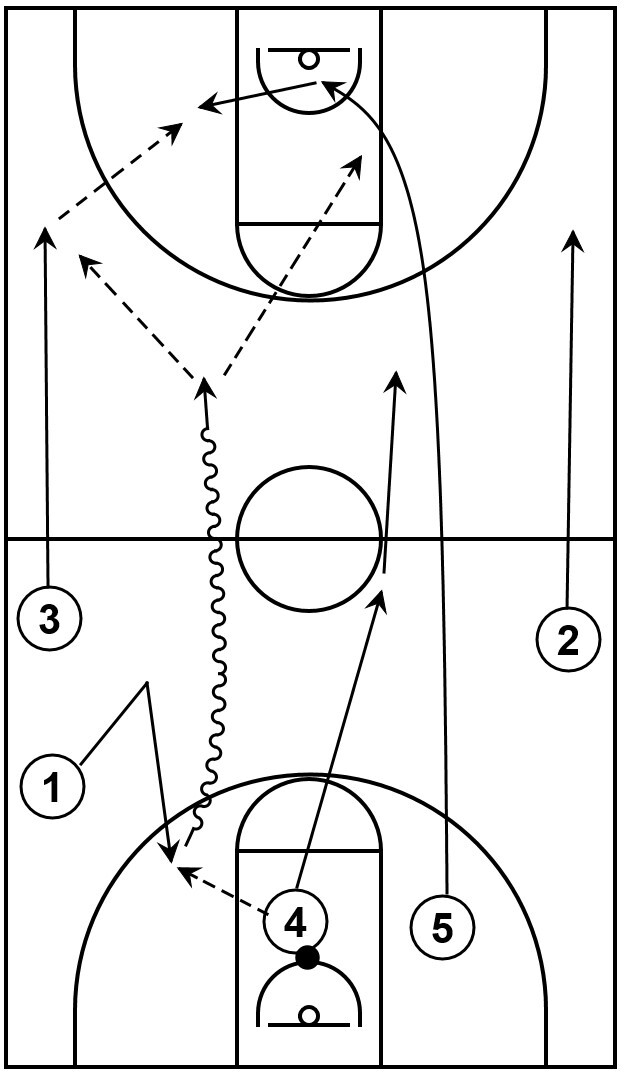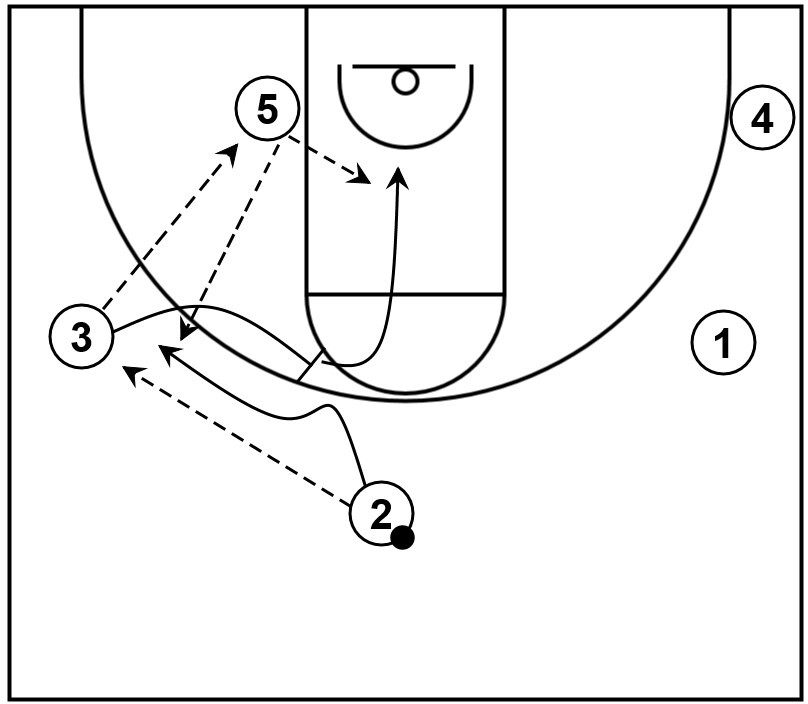Basic information about wing area
The wing areas are adjacent to the nearest sideline in the half court, generally at or slightly above the free throw line extended, which is an imaginary line extended from the edges of the free throw.
The wing areas are also generally lower than the top/slot areas and higher than the corner areas on the court.
General court areas including the wings

The diagram above shows the general areas of the court including the wings near the sidelines.
As mentioned previously, the wings are extended from the edges of the free throw line, which are also known as high post elbows, or simply elbows.
What’s more, the wing areas are below the top as well as the slots but above the corners in addition to the low post areas.
General information about wing player
The wing player typically plays on or near the wing areas of the basketball court. Generally speaking, traditional types of wing players usually comprise the basketball positions known as the shooting guard and small forward.
Shooting guard
The shooting guard typically emphasizes scoring points and/or demonstrating playmaking ability on offense while playing solid defense against the opposing team’s shooting guard or wing players, especially near perimeter areas of the court.
In terms of number format, the shooting guard is usually indicated as the number 2 while on offense or X2 while on defense.
Small forward
The small forward is somewhat similar to a jack of all trades and usually has the capability to excel in a number of areas on the court including scoring, rebounding, playmaking, and defending.
As it relates to number format, the small forward is commonly denoted as the number 3 while on offense or X3 while on defense.
Examples of offensive actions
Standard wing players are typically involved in various offensive actions such as passing, cutting, screening, dribbling, and/or shooting on or near the wing areas of the court.
The diagrams below comprise different examples of offensive actions that could be performed by these traditional wing players. It is also possible that even more actions will be added over time.
Additionally, alongside the shooting guard and small forward, other offensive and/or defensive players on any diagrams below are generally represented by the standard basketball positions, unless otherwise noted.
In essence, 1 and X1 are the offensive and defensive point guards.
4 and X4 are the offensive and defensive power forwards.
5 and X5 represent the offensive and defensive center positions.
Wing players sprint during transition offense

In reference to the adjacent example, the wing players, denoted as 2 and 3, sprint down the wing areas during transition offense, which could result in a fast break scoring opportunity.
To give more detail, it is assumed that the opposing team missed a field goal attempt. As a result, 4 collects the ball, indicated by the black dot, as a defensive rebound.
At that point, the team currently in possession of the ball has the opportunity to run their transition offense.
From there, 1 makes a V-cut to get open and receive the ball from 4. As that happens, 2 and 3 sprint down the court towards the right side and left side wing areas respectively.
At the same time, 5 sprints down toward the basket as a rim runner. Furthermore, 1 dribbles down the court near the left slot, represented by the wavy arrow, and 4 sprints down the court filling the right slot area.
At some point during the fast break action, 1 could pass the ball to 5, represented by the dotted arrow, and then 5 could score via a layup if that is available.
Otherwise, 3 could receive the ball from 1 instead. In addition, 5 could cut through the lane towards the strong side, set up near the left side low post area, receive the ball from 3, and potentially score via a low post move.
Moreover, if the low post action is not available, the team has effectively implemented a 4 out 1 in alignment. So, assuming there is enough time remaining on the game clock and/or shot clock, it is possible to execute other offensive actions as necessary.
Wing player sets screen during split action

In relation to the adjacent example above, the wing player, indicated as 3 initially executes a post entry pass followed by a split cut to set a screen for another teammate, denoted as 1.
To provide more clarity, 2 initially begins in possession of the ball near the top. Next, 3 receives the ball from 2 who throws the ball inside with 5 as the recipient.
Following that post entry pass, 3 executes a split cut away from the ball to set a screen, which is utilized by 2 who comes back toward the wing.
In addition to that, 3 can also slip the screen and cut to the basket. Afterwards, 2 or 3 could receive the ball from 5, which could result in scoring opportunities behind the three-point line or at the rim.